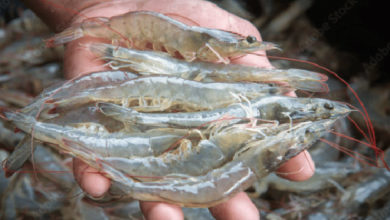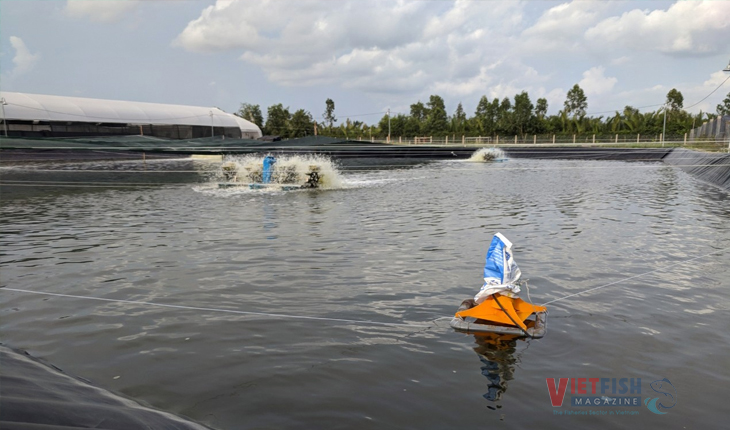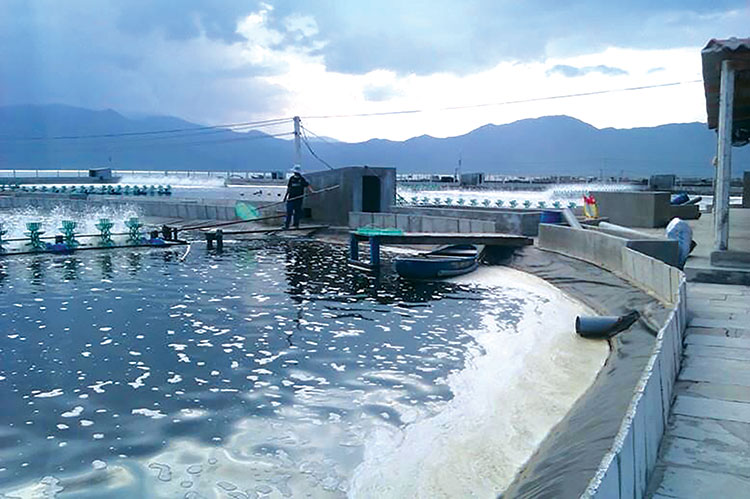Shrimp King Minh Phu shares nature-based shrimp-rice model
“The shrimp-rice model not only ensures environmental sustainability but also economic and social sustainability for local people,” said Lê Văn Quang, CEO of Minh Phu Seafood Corporation.
At the National Conference on mobilizing resources to implement nature-based agricultural solutions in the Mekong Delta, held in Cà Mau, the “Shrimp King” Lê Văn Quang, CEO of Minh Phu Seafood Corporation, shared insights into the shrimp-rice model, a solution for nature-based shrimp farming.
Quang stated that the shrimp-rice model is a unique nature-based agricultural practice, inherently suited to the Mekong Delta region and its tropical monsoon climate. The model’s characteristic feature lies in the alternation between the two seasons: the freshwater flood season and the saltwater dry season, creating suitable ecological conditions for both rice and shrimp growth.
During the dry season, with saltwater flowing inland from the sea, the coastal plains become an ideal environment for shrimp farming. Shrimp are raised entirely in natural conditions without industrial feed, utilizing abundant natural food sources from rice roots.
The nutrients, microorganisms and aquatic animals that are circulating and thriving within the circulation of saltwater and freshwater ecosystems, provides ideal conditions for shrimp and rice growth. The world’s best rice varieties, such as ST24 and ST25, are produced in this place.
During the rainy season, as freshwater returns, these nutrient-rich lands transform into lush rice fields. The nutrients, shrimp feces, and floc combine to form natural organic fertilizers for rice growth.
“The shrimp-rice model yields an average of 5 to 8 tons of rice and 300 to 1,000 kg of shrimp per harvest. Thus, the minimum annual income from this model is 250 million dong, averaging 500 million dong, and can reach up to 1 billion dong per year per hectare if managed successfully,” emphasized Quang.
The cycle between the two independent aquatic environments creates balance and sustainability for the shrimp-rice model. Each component serves as both output and input for the other in a closed-loop production system. This unique adaptability to natural conditions has made the shrimp-rice model sustainable and suitable for the Mekong Delta environment.
Quang believes that if the shrimp-rice model continues to be implemented as it is now, it will require minimal investment, as farmers only spend a small amount to purchase rice and shrimp seeds, yet they can generate revenues of 250 to 500 million dong per hectare per year.
“However, to achieve higher revenues, from 1 to 2.5 billion dong per hectare per year, cooperation is needed to combine large fields of 7 to 10 hectares, creating large shrimp-rice fields of 1,000 to 10,000 hectares. This involves multiple households forming cooperatives and multiple cooperatives linking together into a new type of cooperative,” emphasized Quang.
Minh Phu Seafood Corporation is currently collaborating with localities and farmers to implement and develop shrimp-rice models certified by ASC/BAP/organic, ecological standards with the aim of covering the entire Mekong Delta, helping local farmers fetch higher prices in the market.
Quang affirmed: “The shrimp-rice model not only ensures environmental sustainability but also economic and social sustainability for local people. Annual incomes ranging from hundreds of millions to billions of dong per hectare will enable farmers to stabilize their lives and become wealthy right on their own land.”
VFM






